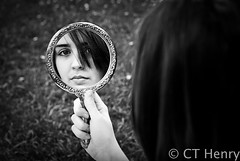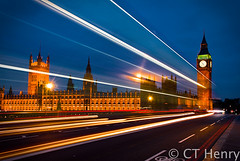One of the biggest frustrations for beginning photographers is blurry images. You open your picture on the computer or print the photo only to discover that the main subject is out-of-focus. In fact, it happens so much that novices think that an unfocused image is quite acceptable.
Getting the subject in focus is one of the most important concerns to pro photographers. You may hear some refer to certain images as “tack sharp”. This involves more than merely glancing at the LCD screen on the back of the camera. The picture may look in focus on the small 3” screen, but only by zooming in to 100% can you really check the sharpness of the image.
Most of the time, blurry images are simply due to the vibrations caused by our hands, otherwise known as “camera shake”. Nevertheless, photographers can take steps to ensure that their images are tack sharp.
10. Buy a VR or IS lens
Most new kit lenses come with vibration reduction (VR) or image  stabilization (IS) technology, which compensates for camera shake while hand-holding the camera. Although its effects may be slight, it could mean the difference between a blurry photo and a focused one. Nevertheless, this technology isn’t going to help you get a perfectly sharp shot in really low lighting conditions.
stabilization (IS) technology, which compensates for camera shake while hand-holding the camera. Although its effects may be slight, it could mean the difference between a blurry photo and a focused one. Nevertheless, this technology isn’t going to help you get a perfectly sharp shot in really low lighting conditions.
9. Use TWO hands and keep the elbows close together
Have you seen tourists holding their cameras out with one hand to take a photo? It’s a good bet that their image will be out-of-focus. Two hands are always better than one to help stabilize the camera and minimize camera shake. If you have a DSLR, place one hand under the lens to support it, and use the other hand for the shutter button. Keep your elbows close together. This creates a stable platform, which reduces camera shake.
8. Hold the camera closer to you
Your hands shake more when you hold a heavy object farther away from your body. Hold your digital camera near your face to reduce the vibrations caused by your hands. If you have an eye-piece on the camera body, use it to get closer to the camera.
When you press the shutter halfway down, the light meter calculates a shutter speed and an aperture value according to the available light in the scene. Looking through the viewfinder, the number on the far left is the shutter speed (for Nikons anyway). If it reads: “50,” it really means 1/50 of a second. While hand-holding the camera, you want to take the picture at a shutter speed at or faster than 1/60. Faster shutter speeds compensate for any vibrations from your hands. Most of the time, the 1/60 rule is a great guideline, but it won’t help you in all shooting conditions. For instance, your shutter speed needs to be higher than 1/60, if your subject is moving. Nevertheless, it’s always a good idea to check your shutter speed before you take a photo. If it falls lower than 1/60 when hand-holding the camera, you can expect blurry results.
6. Increase your ISO
If your shutter speed is slower than 1/60, try increasing your ISO. ISO involves the camera’s sensitivity to light and “bumping up” the ISO allows you to take photos at faster shutter speeds that compensate for camera shake. Nonetheless, this technique has a cost. It’s great that you can achieve high shutter speeds in low light, but you sacrifice image quality. The more you increase your ISO, the grainier your images will look. These grainy, unwanted pixels are called “noise.” It’s a trade-off. If you want to get the image in focus, you might have to sacrifice quality. With today’s’ digital cameras, you can increase the ISO to 800 without much noise.
5. Shoot in Continuous Burst Mode
Ever see sports photographers hold their finger on the shutter and take a lot of photos all at once? That’s a continuous burst! The longer you hold the shutter button down, the more photos the camera takes. Some cameras can shoot up to 9 frames per second in this mode. And with this many images being created so quickly, one of them is bound to be in focus. No matter what my subject is, I usually take 2-3 photos in continuous bust mode.
4. Use the Self-Timer
Sometimes you can introduce vibrations simply by clicking the shutter button. Another way to avoid camera shake is to use the self-timer function on your digital camera. M ost self-timers are programmed for 2 or 10 seconds. After placing the camera on a flat surface and turning on the self-timer, click the shutter to start the timer and then take your hands completely off the camera. After the set amount of time, you’ll hear the camera create the image. Since you aren’t touching the camera, there is no camera shake. You get a sharp picture every time!
ost self-timers are programmed for 2 or 10 seconds. After placing the camera on a flat surface and turning on the self-timer, click the shutter to start the timer and then take your hands completely off the camera. After the set amount of time, you’ll hear the camera create the image. Since you aren’t touching the camera, there is no camera shake. You get a sharp picture every time!
3. Use a Tripod
There is nothing more stable than a trip od, and pro photographers, who are obsessed with getting tack sharp images, use tripods all the time to avoid camera shake. They also use a self-timer, remote trigger, or a cable release to take the exposure instead of pressing the camera’s shutter button. If you want a tack sharp photo, use a tripod as much as possible. I love mine!
od, and pro photographers, who are obsessed with getting tack sharp images, use tripods all the time to avoid camera shake. They also use a self-timer, remote trigger, or a cable release to take the exposure instead of pressing the camera’s shutter button. If you want a tack sharp photo, use a tripod as much as possible. I love mine!
2. Use the Single Point AF Method
Did you know you can tell the camera exactly what you want in focus? When you press the shutter button halfway down, you’ll see a box or point light up in your viewfinder. Whatever is in that box will be in focus. First, make sure you set your AF (Auto Focus) area to “Single” rather than “Wide” or “Dynamic”. Then use the joystick or multi-selector button on the back of the camera to move the point or box around. Remember: you must engage the AF by pressing the shutter halfway down first. With the multi-selector button, you can now choose what will be in focus!
1. Zoom In to Check Sharpness
After you take a photo, review it in playback mode on the LCD screen and zoom in to check the sharpness. (There’s usually a magnification button on the back of the camera.) If the picture is blurry, you can immediately shoot again. If you forget, the opportunity to retake the picture is gone.  Get into the habit of checking your sharpness after every shot. This takes persistence, but it will save you from being disappointed later on when you view the images on your computer screen.
Get into the habit of checking your sharpness after every shot. This takes persistence, but it will save you from being disappointed later on when you view the images on your computer screen.





























